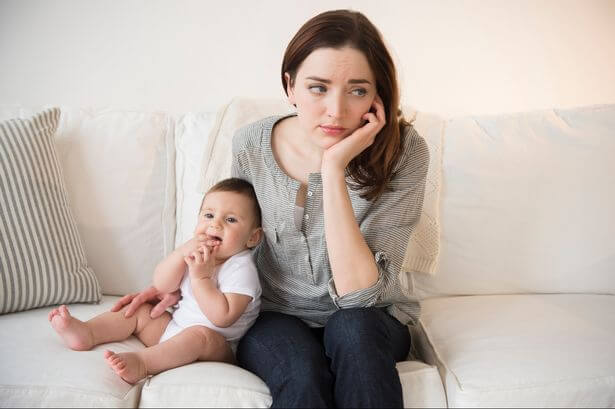"Mom, I Don't Need You": Avoidant Attachment in Children


Reviewed and approved by the psychologist Sergio De Dios González
Attachment is an intense emotional bond that that plays a big role in our relationships. Although there are some types that are harmful, attachment itself is healthy and necessary. It develops in childhood, one of the most important, formative times in a person’s life. That is, if there has been any type of negligence or harmful behavior in this period, avoidant attachment may occur.
If the environment we were raised in led us to develop this type of attachment, we will have many problems building healthy relationships. However, we won’t be aware of all these problems until we reach adulthood. There are even adults with problems derived from their attachment style that unaware this is what caused them.
Going back to childhood, let’s think about how children adapt to the environment they happen to be born into. Therefore, if the parents are too intrusive or too distant, they’ll develop defensive strategies to deal with it. One of these strategies is avoidant attachment.
Ainsworth’s experiment on avoidant attachment
Mary Ainsworth conducted several studies that led her to identify 3 types of attachment: avoidant, secure, and ambivalent. Of them, only secure attachment is the “ideal” one. The rest are dysfunctional attachments.
As for research into the first type of attachment, which we’re looking at today, Ainsworth carried out an experiment called “strange situation.” In it, she studied the behavior of babies when separated from their mothers.
What Ainsworth discovered with her experiment was very revealing. The children very easily became angry, that is, they were very susceptible to anger. However, they did something different than what children usually do: they didn’t look for their mothers when they needed them.

For example, a baby with secure or healthy attachment is very likely to start crying when their mother leaves the room or moves away from them. But then if the mother returns, they stop crying and start to feel safe, calm and happy.
This did not happen with babies with avoidant attachment. They were indifferent. They didn’t care if the mother came back or left. Therefore, she did not provide them with the security that every child requires.
If a child experiences rejection when they want to approach their parents and the parents do not respond to their emotional needs, they will most likely develop an avoidant attachment.
The most curious thing about Ainsworth’s experiment is that children with this type of attachment literally ignored their mothers. However, with strangers they were friendly, more sociable. Ainsworth concluded that because the babies had not learned to communicate their emotional needs to their mothers (or if they did and it didn’t work), they learned not to need them.
Avoidant attachment and its consequences in adult life
Avoidant attachment has serious consequences on any adult. Although at this point, there are several studies that have opted to classify this type of attachment in two ways: dismissive-avoidant and fearful-avoidant. Let’s see how these two perspectives influence avoidant attachment in adulthood.
People with dismissive-avoidant attachment are usually very independent. In addition, they are considered self-sufficient. This causes them to reject anyone who has any intention to depend on them. Similarly, they are unwilling to deepen relationships because of their refusal to “attach” to someone.

On the other hand, people with fearful-avoidant attachment do want to be deeply intimate with others. However, their fear always wins out. That’s why it’s difficult for them to trust other people, since there is a strong fear inside them that they will be hurt. When they do manage to have some intimacy with other people they feel very uncomfortable.
People with avoidant attachment have a lot of trouble expressing their feelings. Their refusal to bond with people is nothing more than a strategy to protect themselves from possible rejection. They have learned to defend themselves, to get ahead without the protection of their parents. That’s why they have become self-sufficient. However, even if it doesn’t look like it, they suffer a lot.
Avoidant attachment in children is like a signal warning them to isolate themselves from their peers. Sometimes they become hostile and aggressive. In adolescence they also demonstrate this isolation, which may make them unpopular among their peers.
Childhood is a very important stage. Ensuring a secure attachment will help children become adults capable of healthy relationships. If this doesn’t happen, they will continue to act according to the strategies they learned as children to protect themselves. It’s a situation that will become increasingly unbearable.
Attachment is an intense emotional bond that that plays a big role in our relationships. Although there are some types that are harmful, attachment itself is healthy and necessary. It develops in childhood, one of the most important, formative times in a person’s life. That is, if there has been any type of negligence or harmful behavior in this period, avoidant attachment may occur.
If the environment we were raised in led us to develop this type of attachment, we will have many problems building healthy relationships. However, we won’t be aware of all these problems until we reach adulthood. There are even adults with problems derived from their attachment style that unaware this is what caused them.
Going back to childhood, let’s think about how children adapt to the environment they happen to be born into. Therefore, if the parents are too intrusive or too distant, they’ll develop defensive strategies to deal with it. One of these strategies is avoidant attachment.
Ainsworth’s experiment on avoidant attachment
Mary Ainsworth conducted several studies that led her to identify 3 types of attachment: avoidant, secure, and ambivalent. Of them, only secure attachment is the “ideal” one. The rest are dysfunctional attachments.
As for research into the first type of attachment, which we’re looking at today, Ainsworth carried out an experiment called “strange situation.” In it, she studied the behavior of babies when separated from their mothers.
What Ainsworth discovered with her experiment was very revealing. The children very easily became angry, that is, they were very susceptible to anger. However, they did something different than what children usually do: they didn’t look for their mothers when they needed them.

For example, a baby with secure or healthy attachment is very likely to start crying when their mother leaves the room or moves away from them. But then if the mother returns, they stop crying and start to feel safe, calm and happy.
This did not happen with babies with avoidant attachment. They were indifferent. They didn’t care if the mother came back or left. Therefore, she did not provide them with the security that every child requires.
If a child experiences rejection when they want to approach their parents and the parents do not respond to their emotional needs, they will most likely develop an avoidant attachment.
The most curious thing about Ainsworth’s experiment is that children with this type of attachment literally ignored their mothers. However, with strangers they were friendly, more sociable. Ainsworth concluded that because the babies had not learned to communicate their emotional needs to their mothers (or if they did and it didn’t work), they learned not to need them.
Avoidant attachment and its consequences in adult life
Avoidant attachment has serious consequences on any adult. Although at this point, there are several studies that have opted to classify this type of attachment in two ways: dismissive-avoidant and fearful-avoidant. Let’s see how these two perspectives influence avoidant attachment in adulthood.
People with dismissive-avoidant attachment are usually very independent. In addition, they are considered self-sufficient. This causes them to reject anyone who has any intention to depend on them. Similarly, they are unwilling to deepen relationships because of their refusal to “attach” to someone.

On the other hand, people with fearful-avoidant attachment do want to be deeply intimate with others. However, their fear always wins out. That’s why it’s difficult for them to trust other people, since there is a strong fear inside them that they will be hurt. When they do manage to have some intimacy with other people they feel very uncomfortable.
People with avoidant attachment have a lot of trouble expressing their feelings. Their refusal to bond with people is nothing more than a strategy to protect themselves from possible rejection. They have learned to defend themselves, to get ahead without the protection of their parents. That’s why they have become self-sufficient. However, even if it doesn’t look like it, they suffer a lot.
Avoidant attachment in children is like a signal warning them to isolate themselves from their peers. Sometimes they become hostile and aggressive. In adolescence they also demonstrate this isolation, which may make them unpopular among their peers.
Childhood is a very important stage. Ensuring a secure attachment will help children become adults capable of healthy relationships. If this doesn’t happen, they will continue to act according to the strategies they learned as children to protect themselves. It’s a situation that will become increasingly unbearable.
This text is provided for informational purposes only and does not replace consultation with a professional. If in doubt, consult your specialist.







